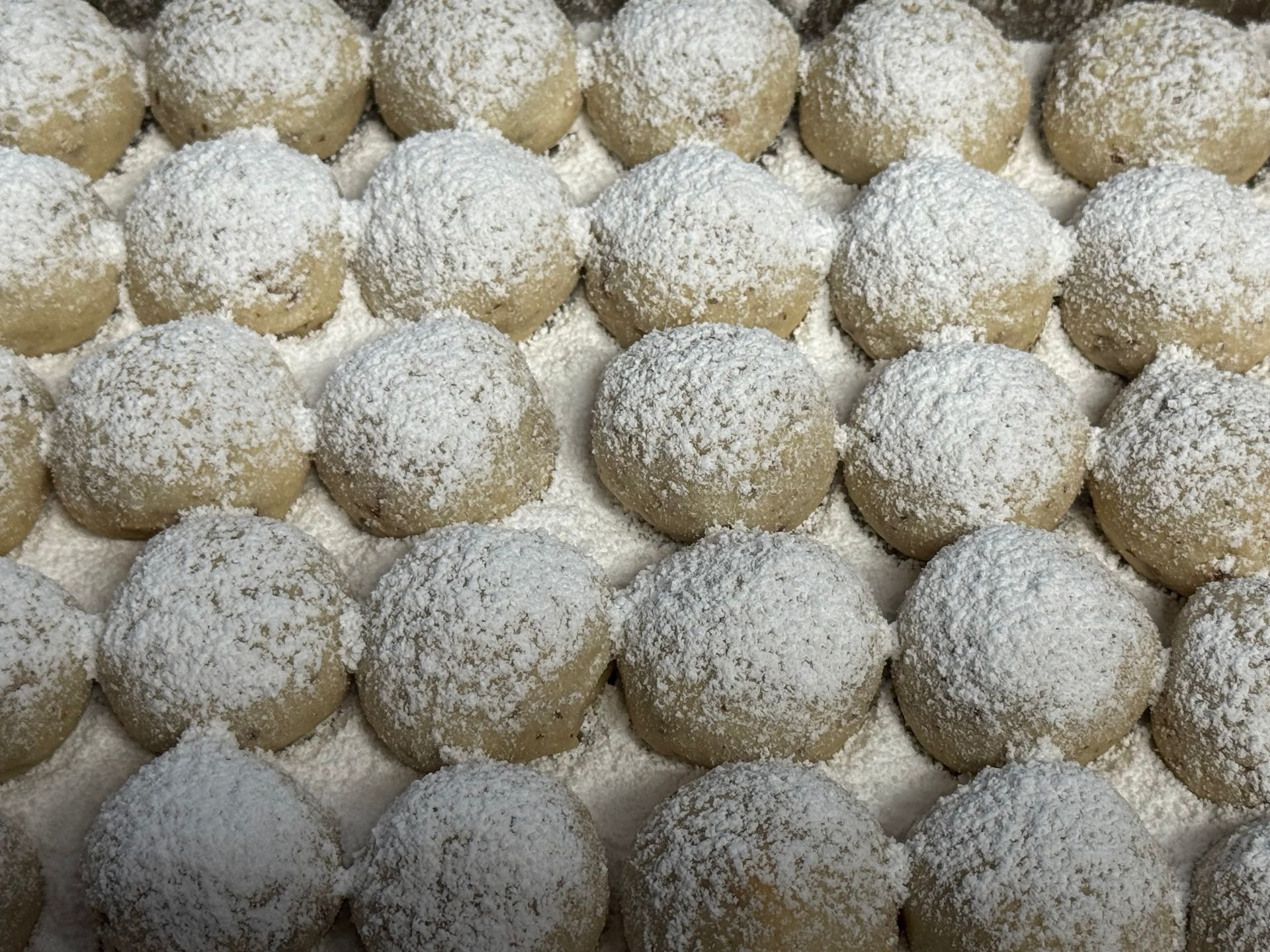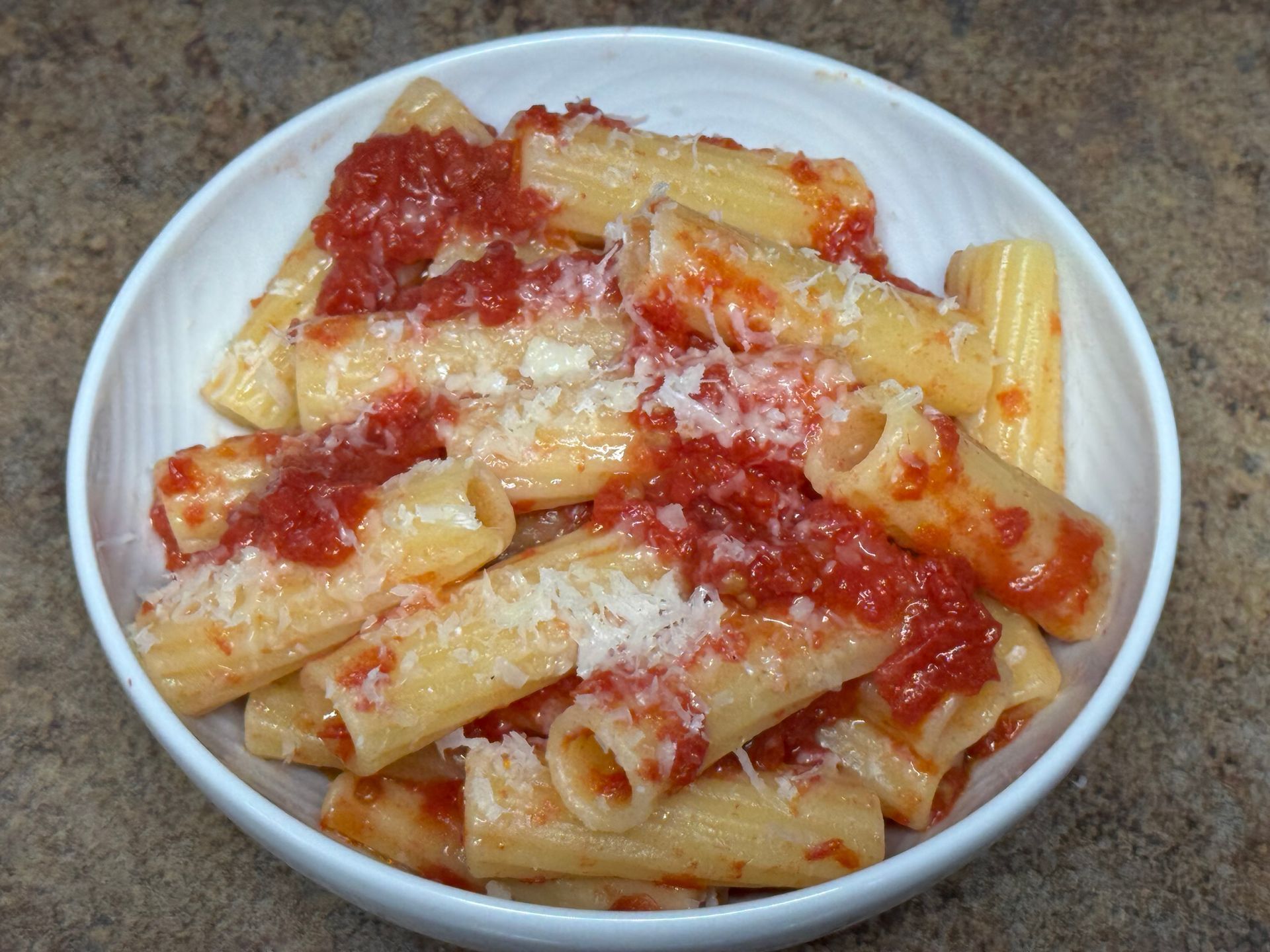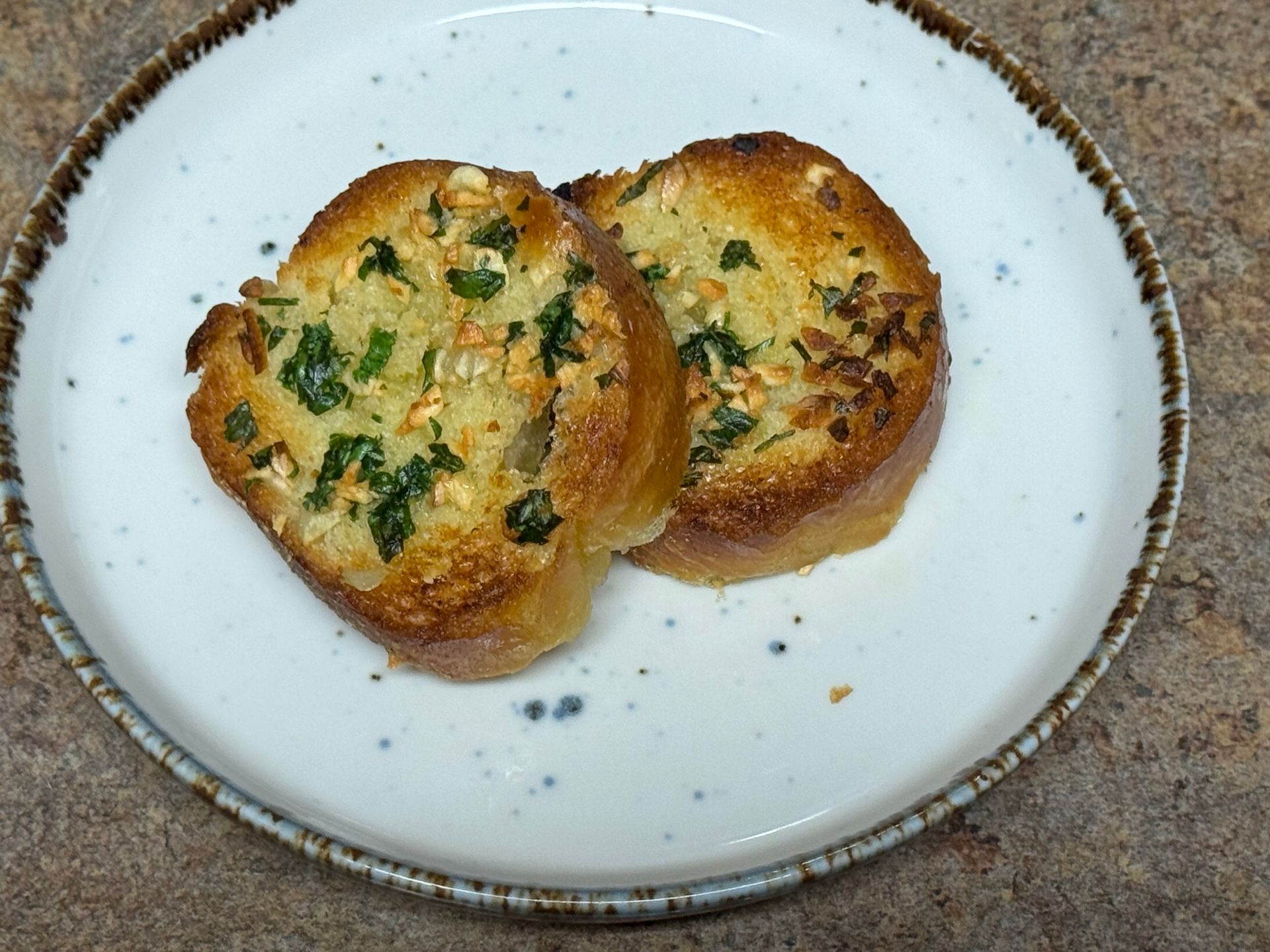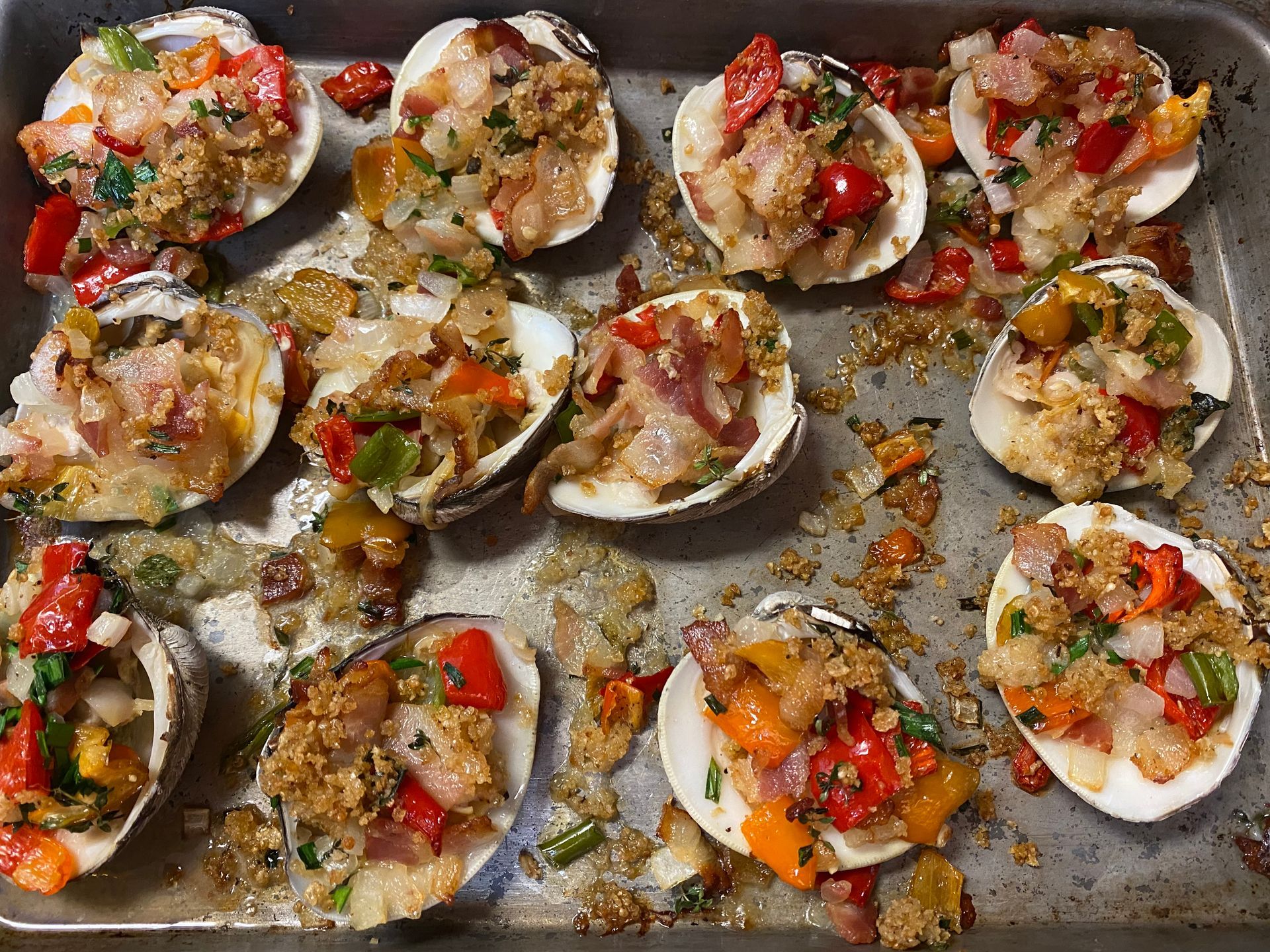
A classic! One of my earlier cooking jobs was at on a boat serving high end continental cuisine... old school. We made clams oreganata and clams casino. I was the pantry cook & opened a lot of fresh clams in those days!
Clams Casino
Baked clams are always best when the clams are opened freshly and filled.
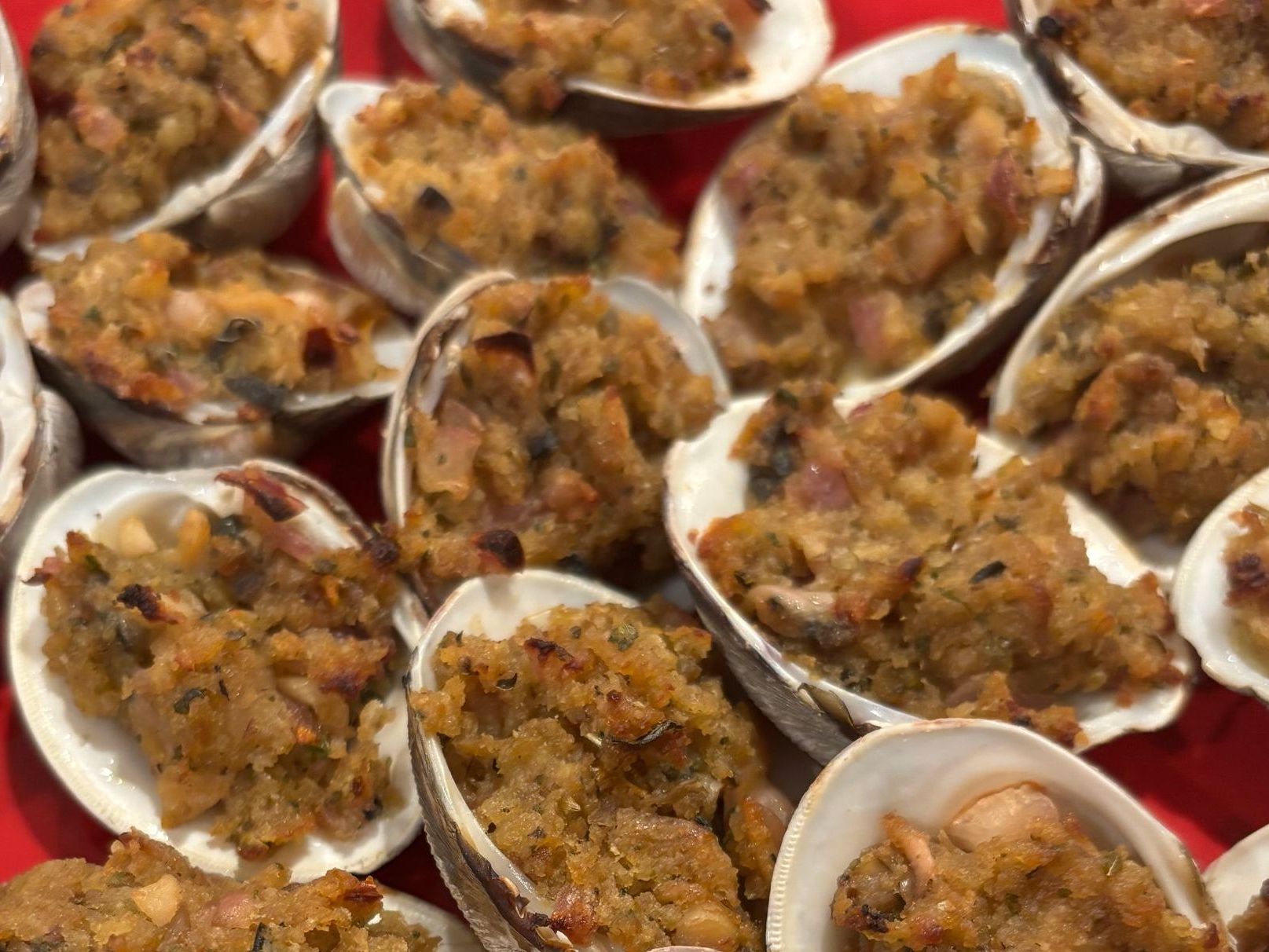
Prep Time: 40 min
Cooking Time: 10 min
Yield: 4 portions
Ingredients
1/2 Cup Bacon, chopped (about 4-5 slices)
¼ cup Spanish Onion, chopped fine
1/2 cup Green, Red, Yellow Bell Peppers, chopped fine
1 clove Garlic, minced
1 Tbsp Parmesan cheese, grated
2 tsp. Italian Parsley, fresh (washed and chopped)
1 Tbsp. Butter,lightly salted
1/2 tsp Kosher Salt
t.t. Black pepper
tt. Red pepper flakes
16 ea Littleneck clams
1/2 Cup. Italian Breadcrumbs
How to prepare Clams Casino
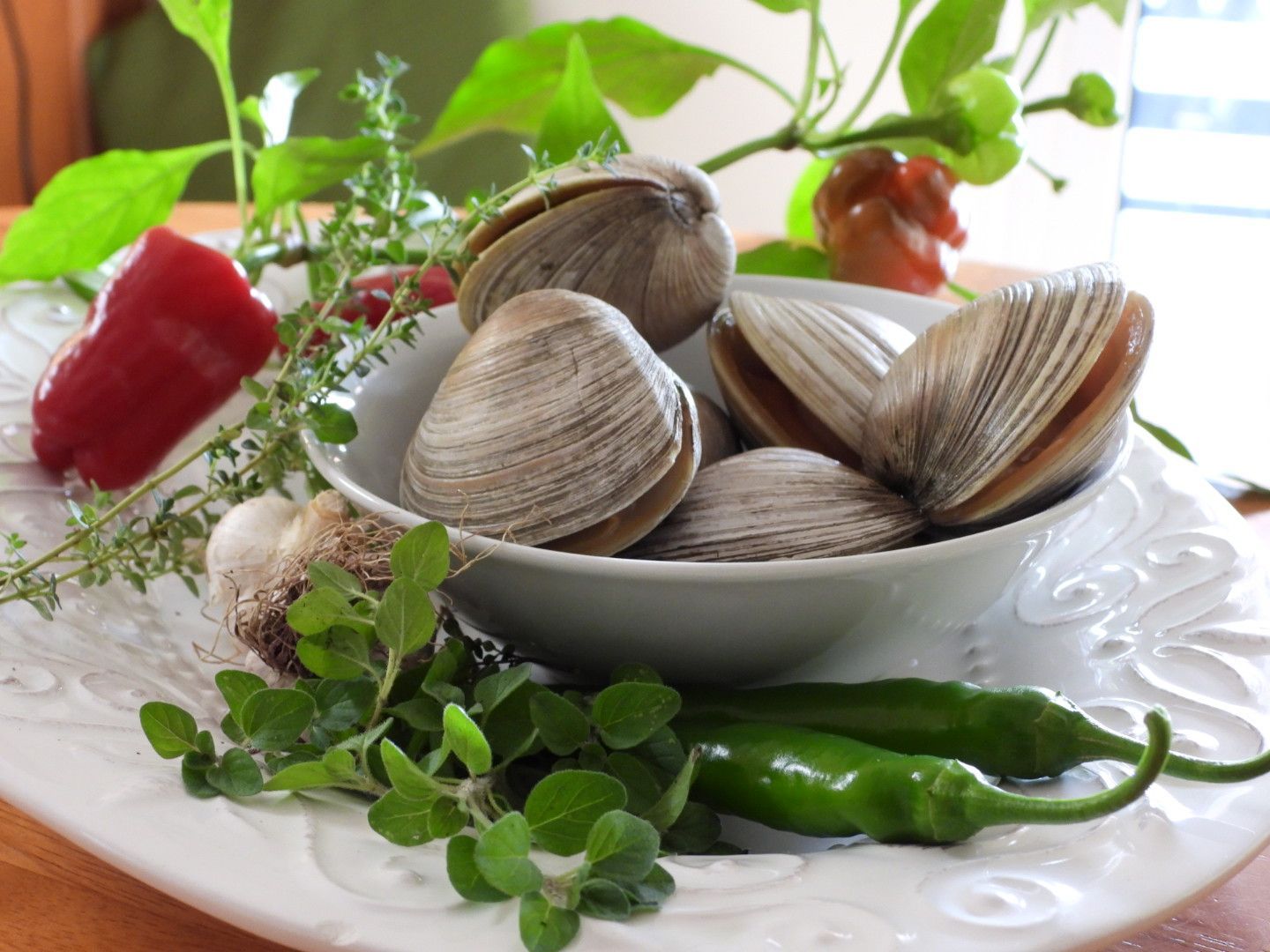
Step 1
Heat the bacon in a hot pan to begin crisping, add the peppers, onions and garlic; cook until tender. There is plenty of fat in the bacon to cook the vegetables, no need to add oil. Place the butter into a bowl, add the warm bacon and vegetables over the butter and stir to melt the butter. Add grated cheese, chopped parsley, salt and peppers. Taste and adjust seasoning.
Step 2
While the casino filling is cooling, open 16 clams on the half shell, being careful to reserve the clam juice; cut the muscle so the clam meat comes out easily.
You can also open the clams by placing on a sheet tray and baking for 2 minutes until the clams begin to open. Don't cook the clams... just enough so they open a little-then using a clam knife, open them completely to stuff.
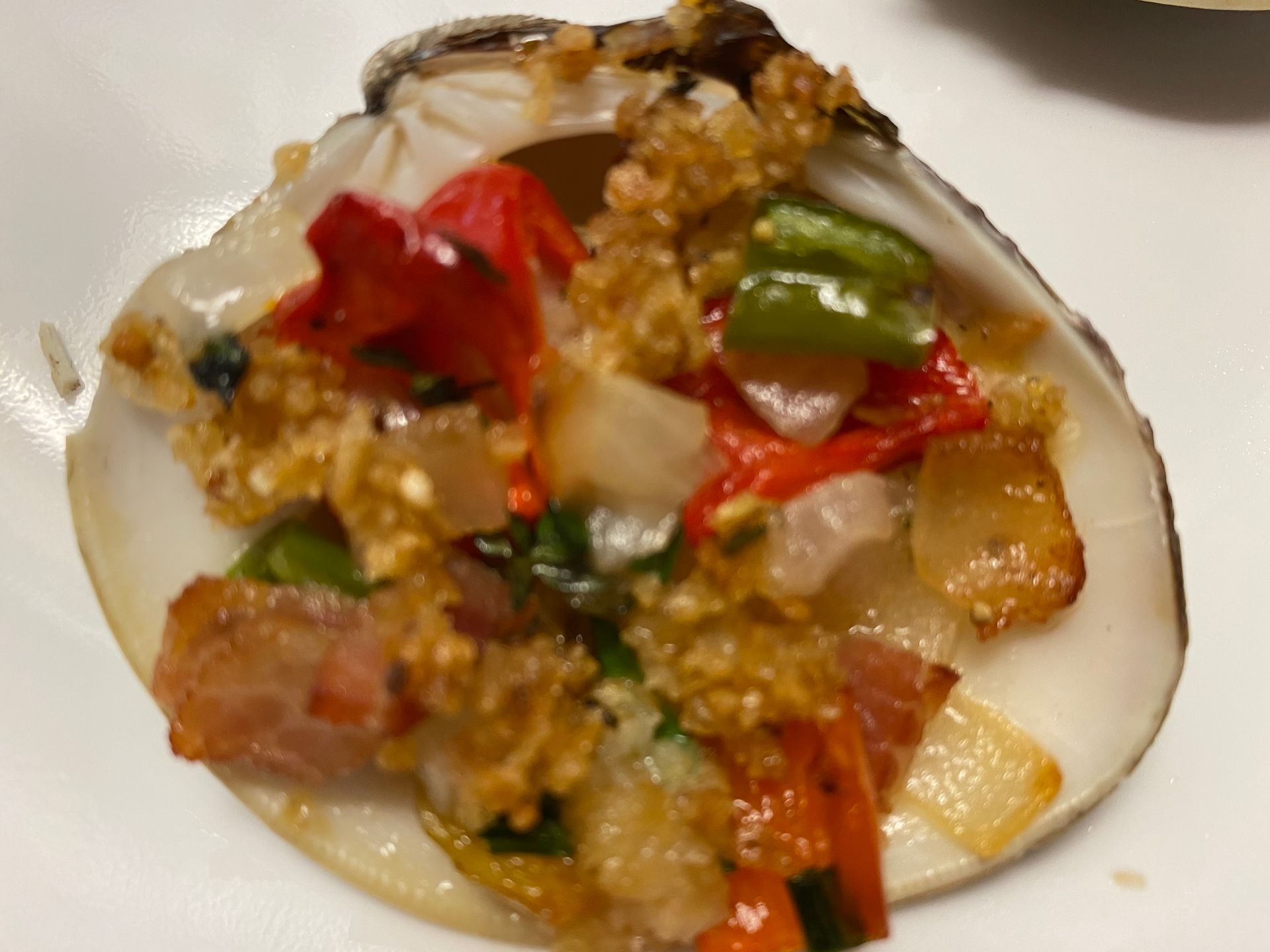
Step 3
Top each clam with a generous tbsp of filling and place onto a sheet tray. Sprinkle with breadcrumbs and place in preheated oven (350 F); bake until cooked, about 5 minutes. Enjoy!
note: some cooks chop the clams or use canned clams... it's much better to use the whole clam for this recipe! You'll see.
